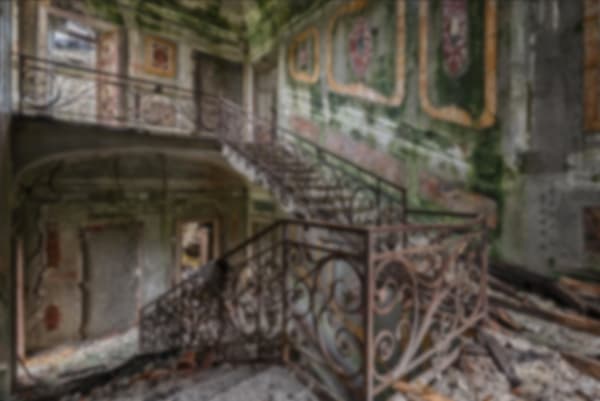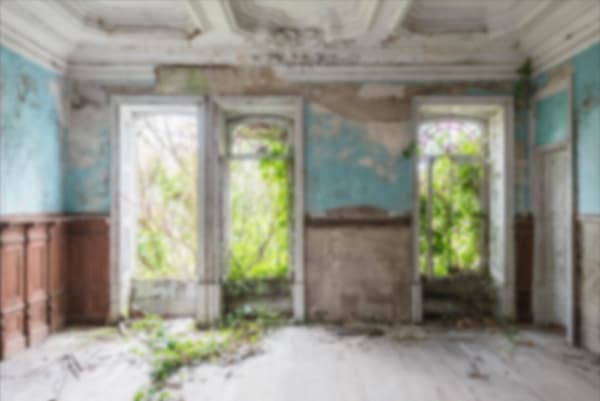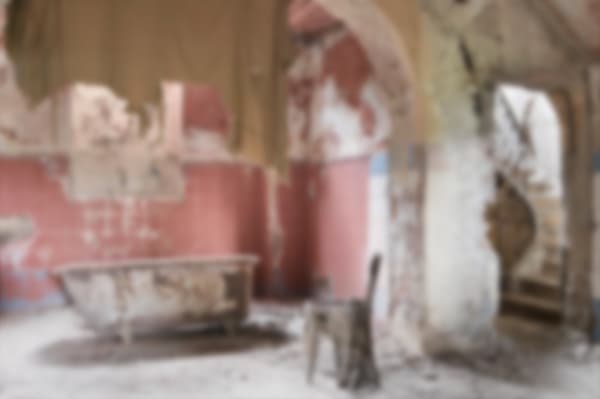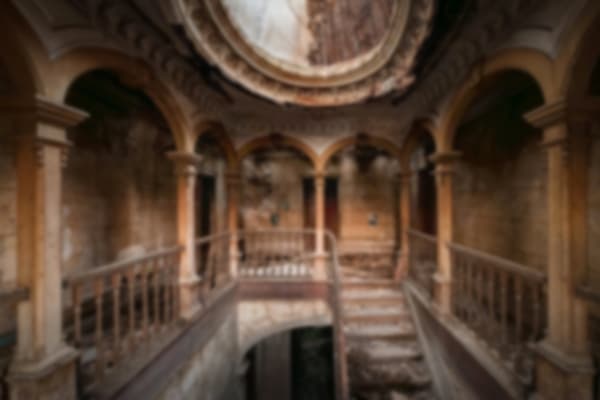THERE IS A CRACK IN EVERYTHING, THAT'S HOW THE LIGHT GETS IN
Leonard Cohen
Chiara Del Vecchio takes us on an intimate journey through the fragile beauty of decay. The villas featured in the Decayseries are not merely abandoned buildings, but places suspended in time, filled with memories that still linger in their empty rooms. In these quiet interiors, every crack and shadow becomes a living trace of what once was.
With a poetic and empathetic gaze, the artist does not document ruin—she listens to its hidden voice and translates it into images that evoke rather than describe. Her painting becomes an act of rediscovery, an emotional archaeology that transforms emptiness into presence, loss into testimony.
Decay is a tribute to the persistence of memory—an invitation to recognize the dignity concealed in the passing of time and the beauty that endures, silently, in things that seem finished yet continue to speak.
The journey into decay begins—through the phenomenology of endings and rediscovery. Chiara Del Vecchio leads us on a visual and emotional path through once-inhabited homes that are now empty, yet far from silent. The villas featured in this collection are emptied treasure chests, architectural relics that have not ceased to speak. There is something profoundly alive in their stillness: the vacant rooms still echo with laughter, toasts, rustling dresses, and glances exchanged beneath bare chandeliers.
Once opulent, overlooking manicured gardens or nestled in the quiet of the countryside, these villas now appear to the artist’s eye as living organisms suspended between abandonment and memory. And yet, their spirit has not dissolved. Del Vecchio’s painting captures the essence of a luxury that has not lost its dignity but has become a tactile memory. Every crack, every flake of peeling plaster, every shadow is rich with meaning—a tangible sign of time that passes but does not erase.
There is a gentle, never resigned melancholy in these works. They do not celebrate ruin for its own sake, but for its power to evoke. The artist does not document—she listens, interprets, and returns. Her empty interiors are like faceless portraits in which the viewer can recognize something of themselves. Behind each canvas lies a delicate, empathetic gaze—a desire to set suspended stories in motion again, to reshape what was, not as nostalgia, but as a translated presence.
Painting thus becomes an act of rediscovery, almost a form of emotional archaeology. These villas do not come back to life, but they reveal life’s persistence. Because the patina of time may obscure, but it cannot erase the soul of things. And in the silence of these empty rooms, memory resonates more clearly than ever.












